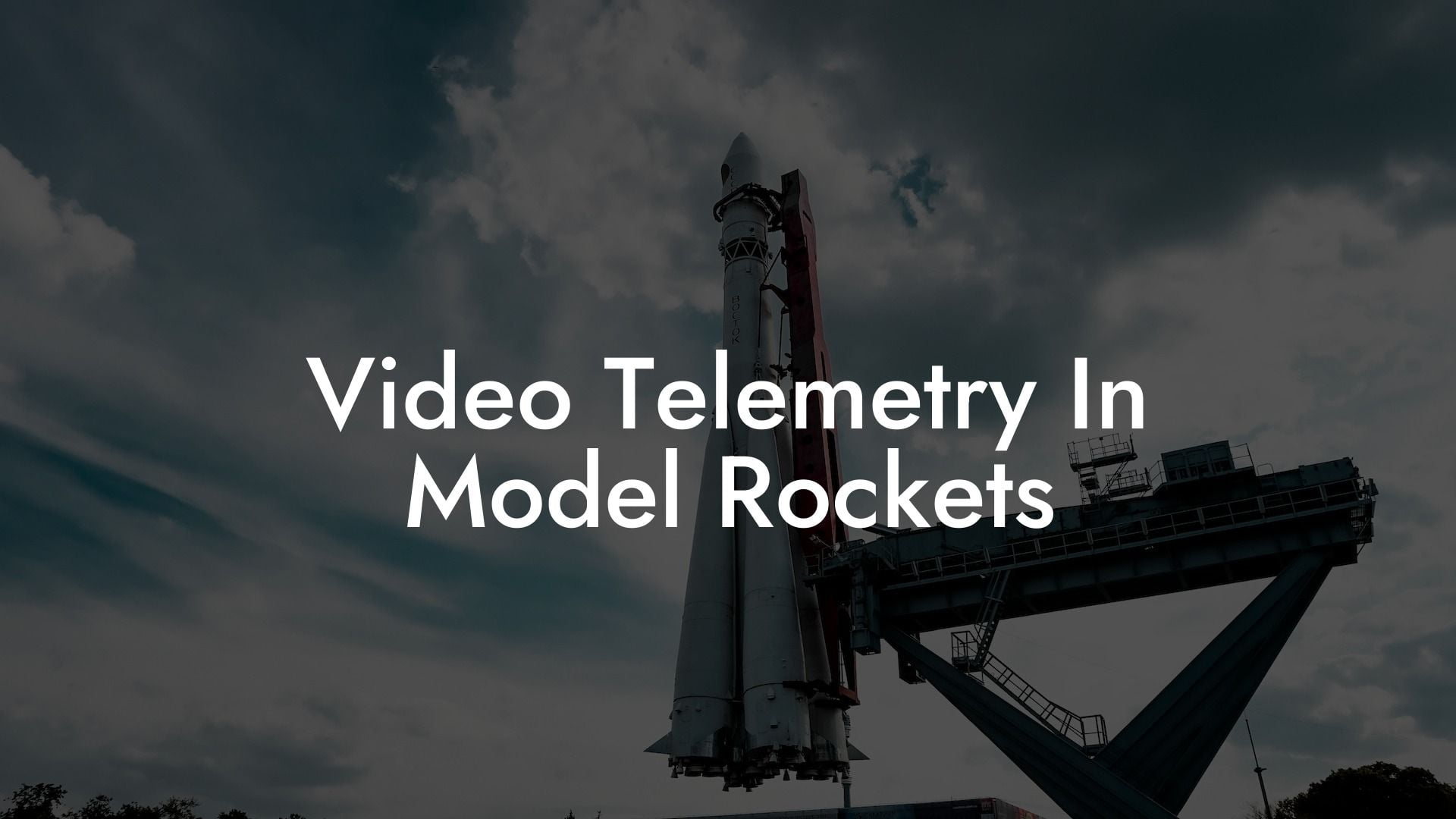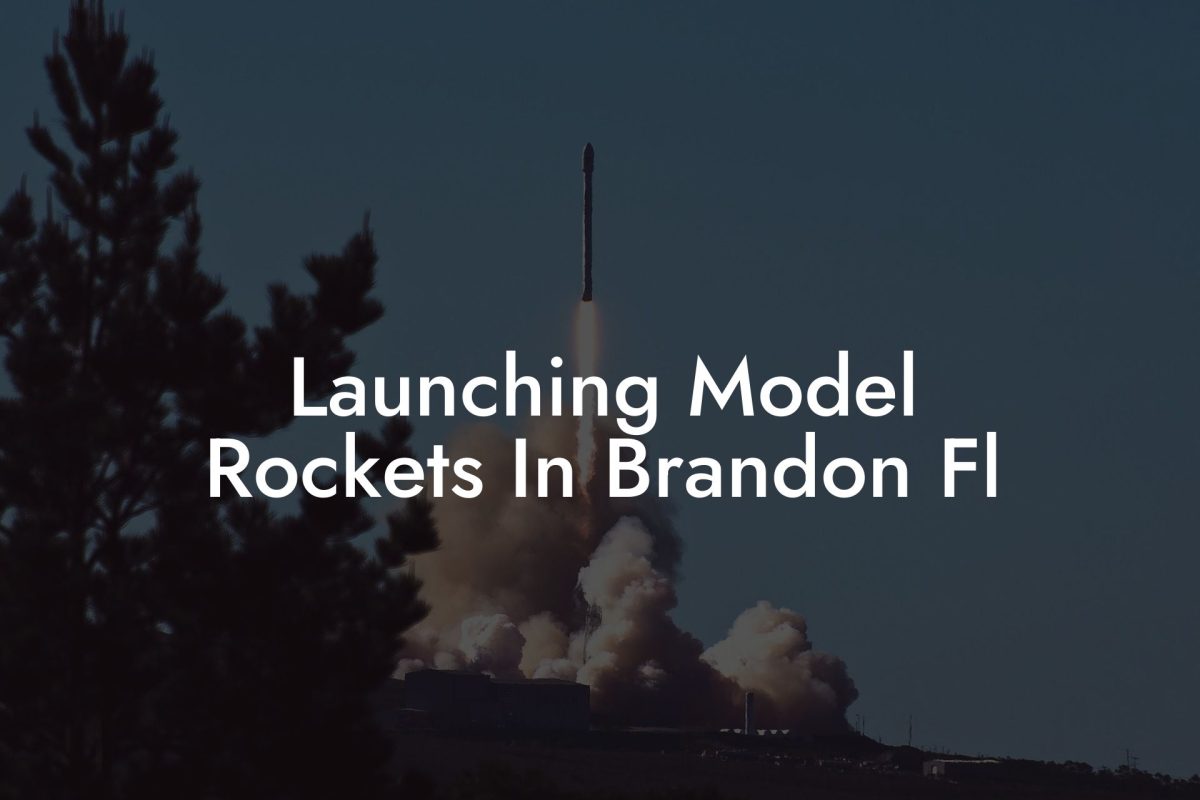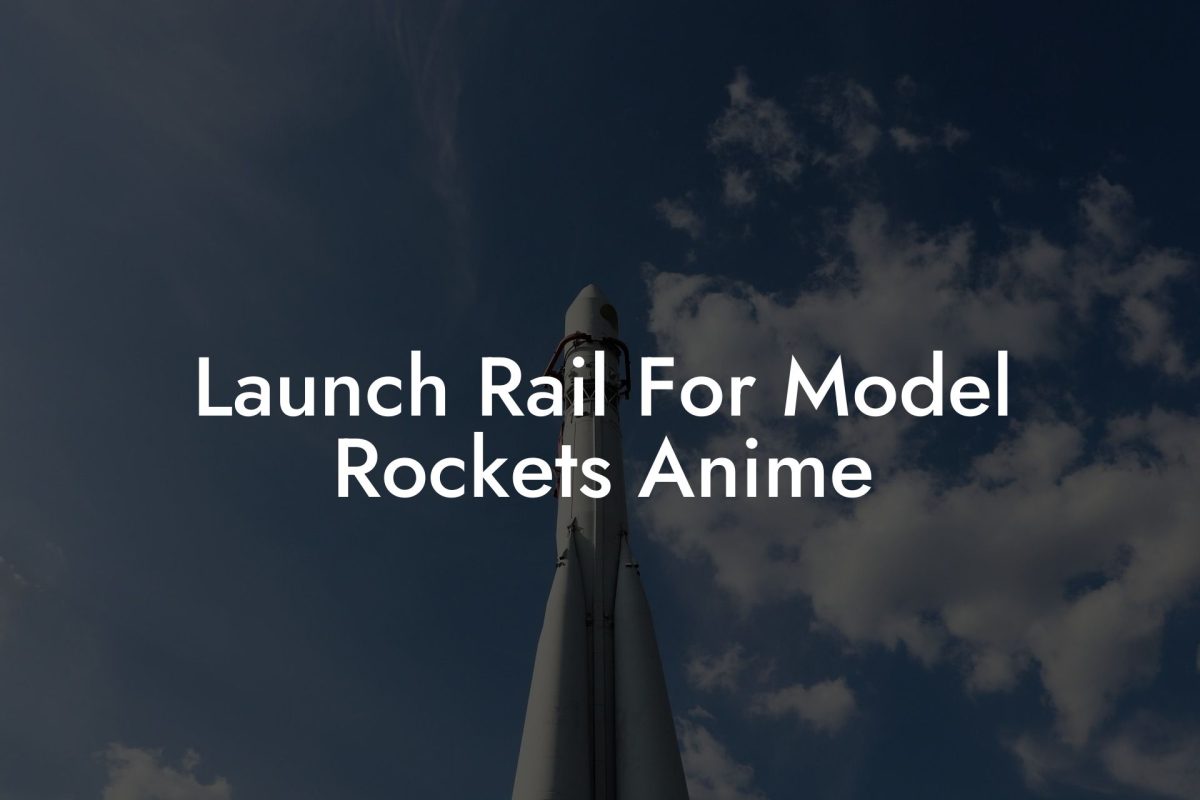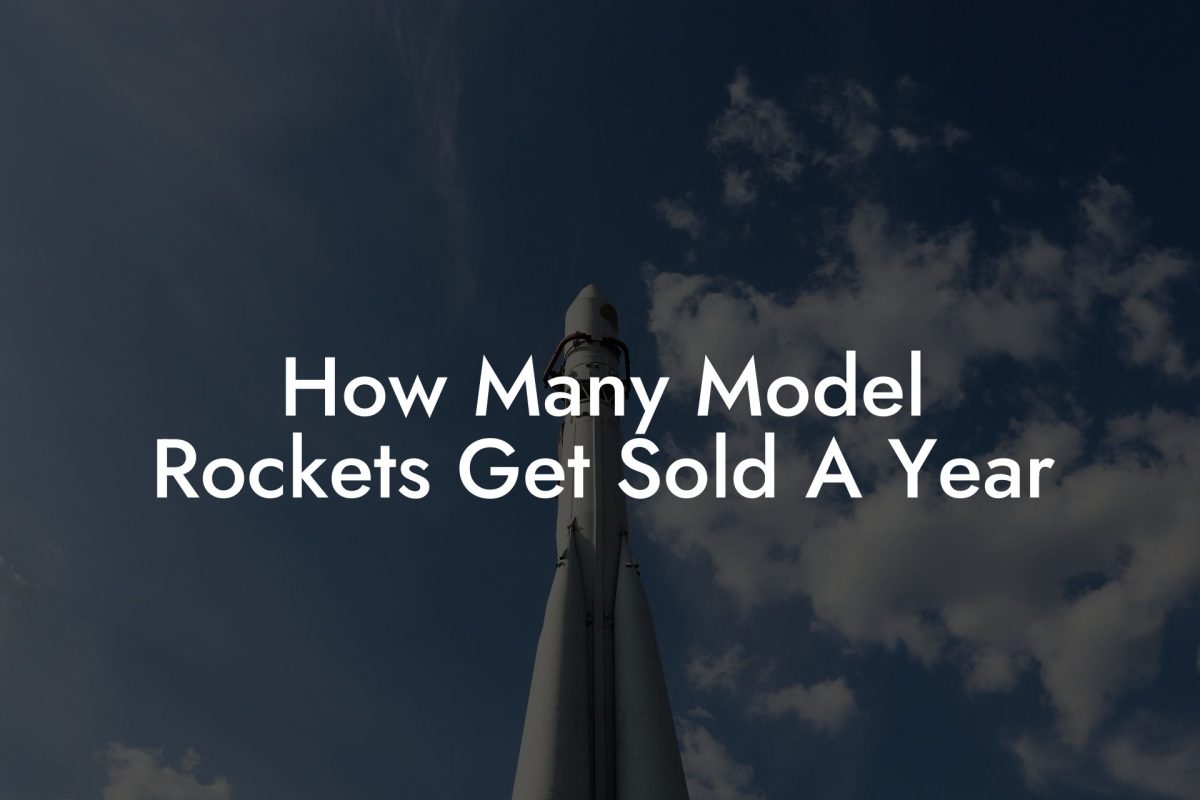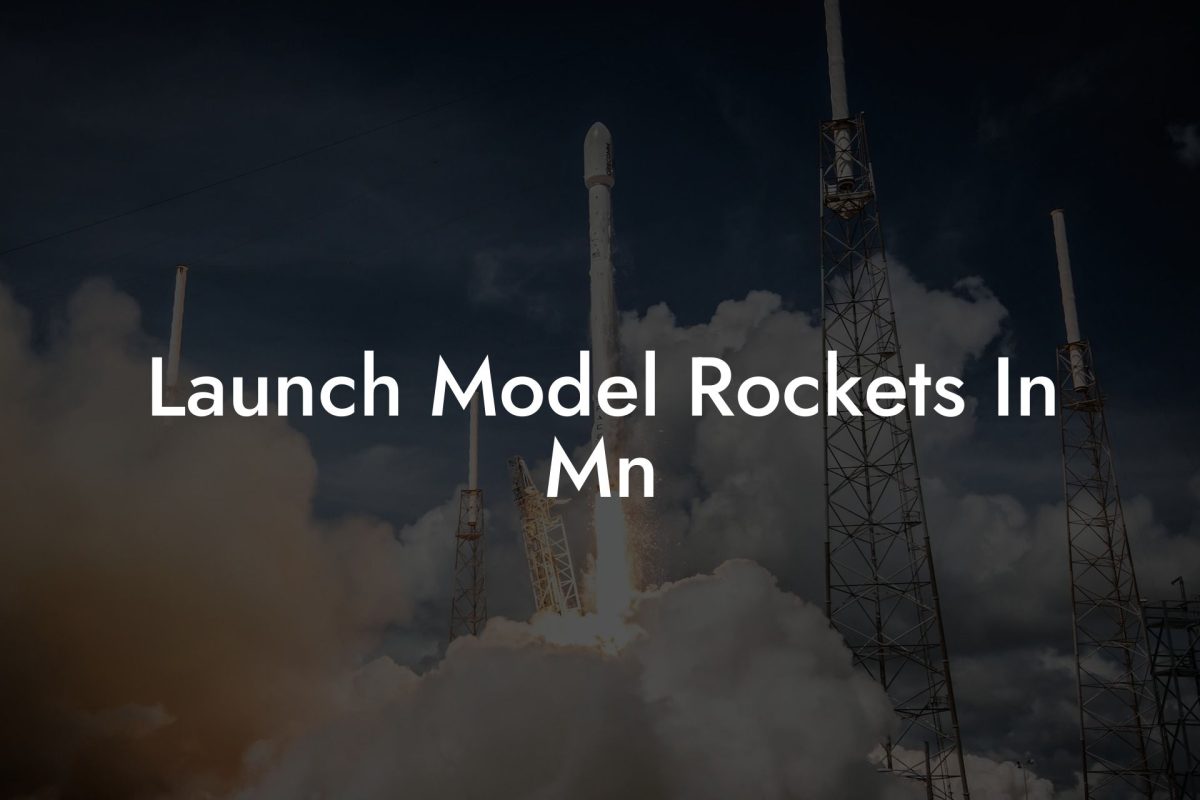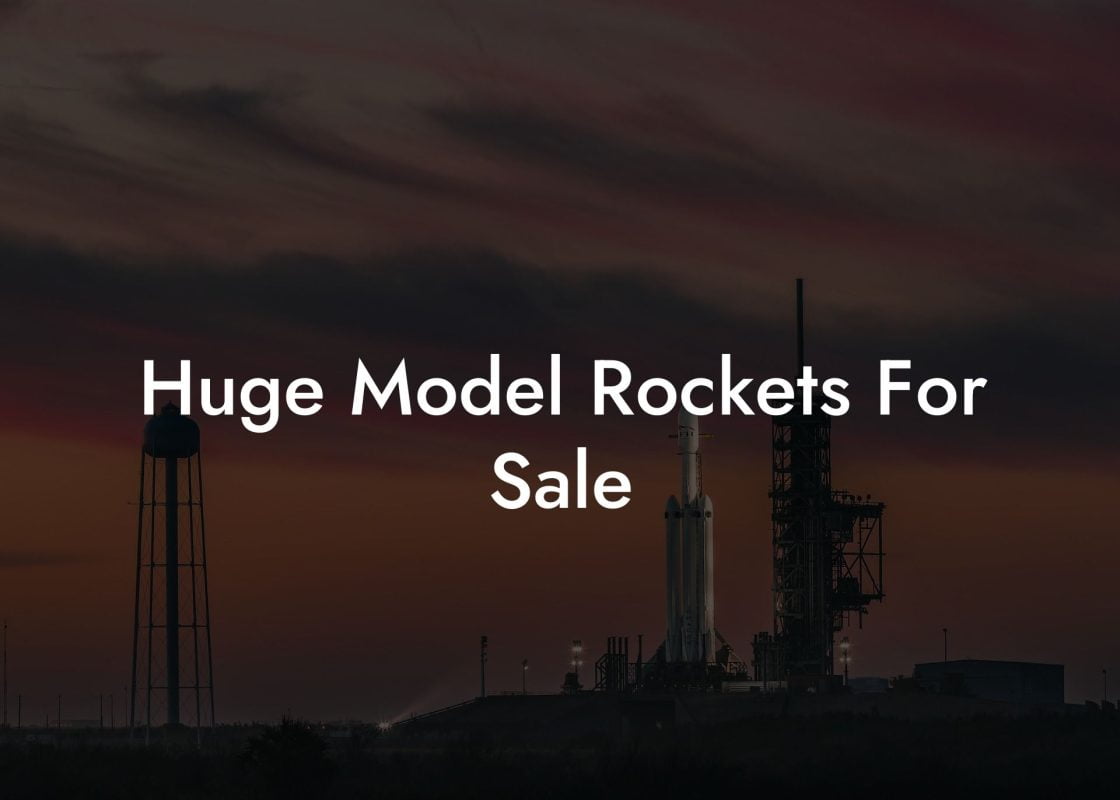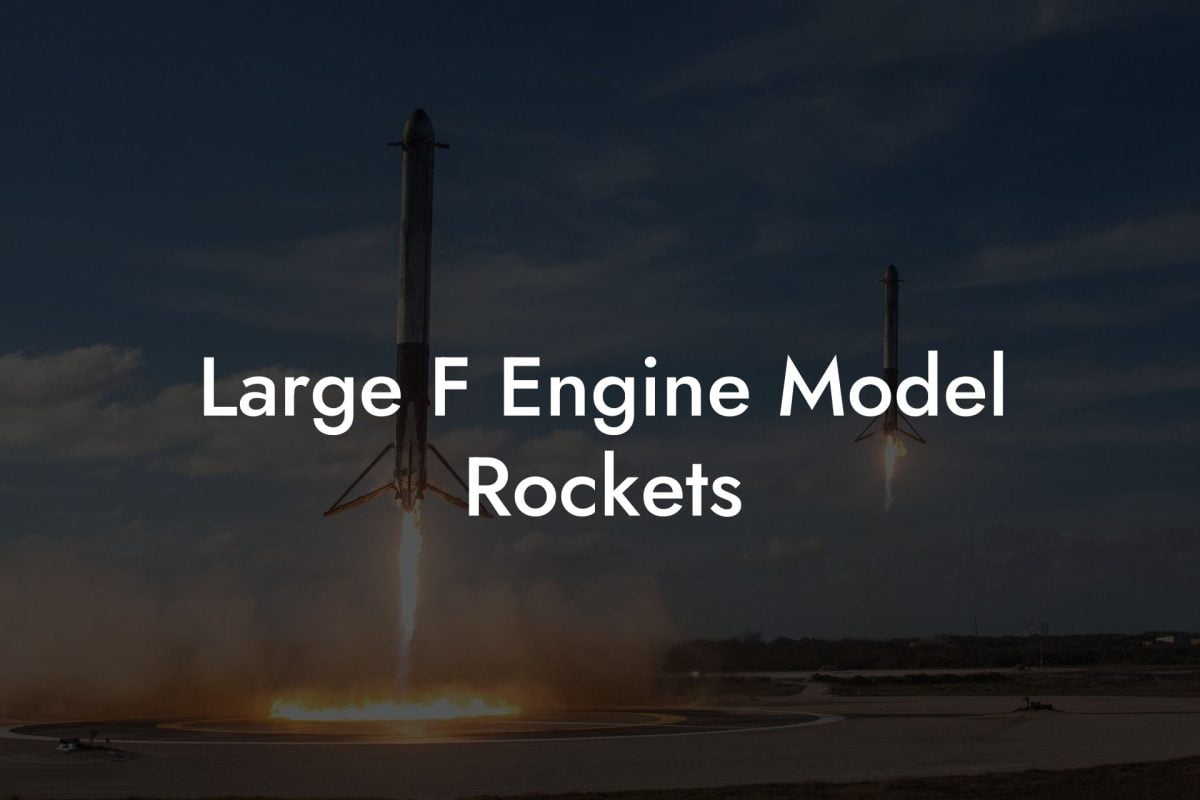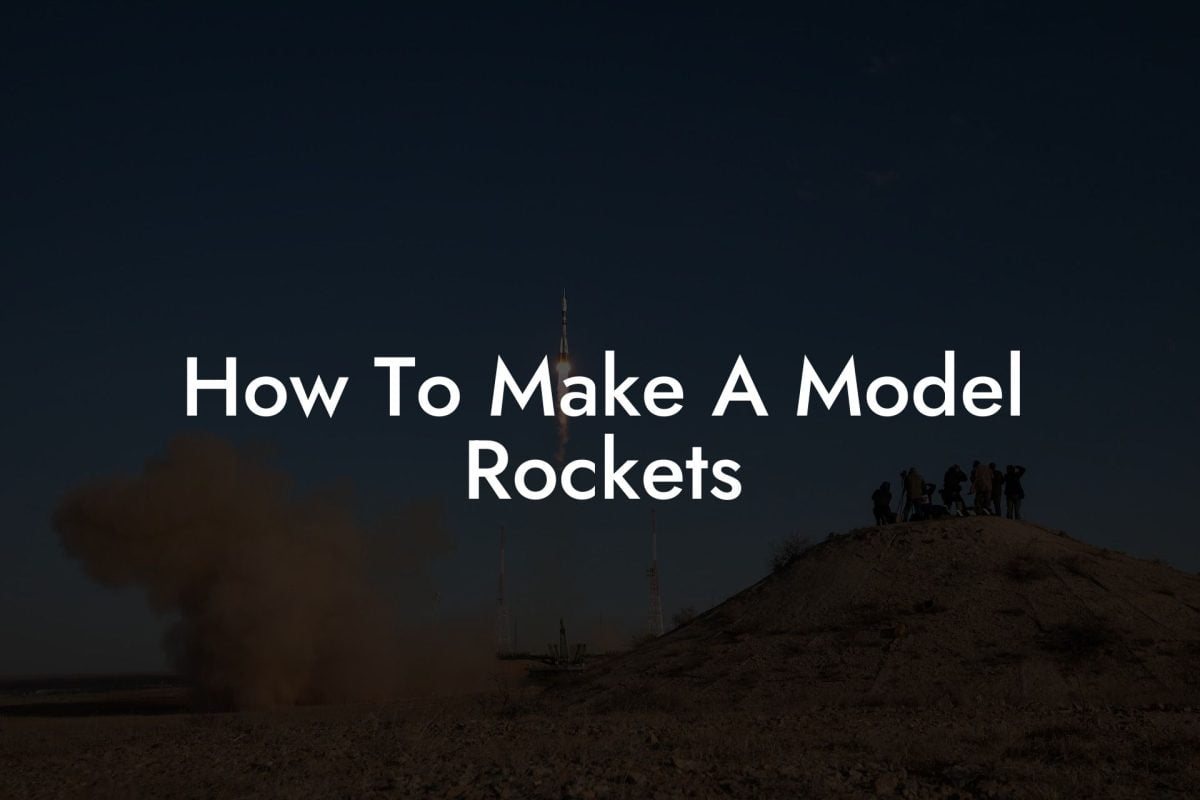Imagine soaring to new heights with your model rocket, capturing every thrilling moment in stunning high-definition video. Welcome to the world of video telemetry in model rockets, where the boundaries of innovation and excitement converge. Whether you're a seasoned rocket enthusiast or just starting out, this comprehensive guide will propel you into the stratosphere of model rocketry, exploring the cutting-edge technology and techniques behind video telemetry.
Quick Links to Useful Sections
- What Is Video Telemetry in Model Rockets?
- The Benefits of Video Telemetry in Model Rockets
- Key Components of a Video Telemetry System
- Choosing the Right Video Telemetry System for Your Model Rocket
- Setting Up and Operating a Video Telemetry System
- Video Telemetry in Model Rockets: A Community of Innovation
- Resources and Community Support: Your Next Steps
- Video Telemetry in Model Rockets FAQs: Your Questions Answered
What Is Video Telemetry in Model Rockets?
Video telemetry is the integration of onboard cameras and sensors that transmit real-time video and data back to the ground, allowing model rocket enthusiasts to capture breathtaking footage and gain valuable insights into their rocket's performance. This innovative technology has revolutionized the hobby, enabling enthusiasts to push the limits of model rocketry and explore new frontiers.
In simple terms, video telemetry combines the thrill of model rocketry with the excitement of aerial videography, providing an immersive experience like no other. By equipping your model rocket with a camera and telemetry system, you can relive the rush of launch, witness the stunning views from the edge of space, and analyze your rocket's performance in unprecedented detail.
The Benefits of Video Telemetry in Model Rockets
So, why incorporate video telemetry into your model rocketry experience? The benefits are numerous and compelling:
- Unparalleled Visuals: Capture stunning, high-definition video from the rocket's perspective, reliving the thrill of launch and witnessing breathtaking views from the edge of space.
- Data-Driven Insights: Gain valuable insights into your rocket's performance, including speed, altitude, and acceleration, to optimize design and improve future flights.
- Enhanced Safety: Monitor your rocket's flight in real-time, ensuring a safer and more controlled experience for yourself and others in the surrounding area.
- community Engagement: Share your video telemetry experiences with the model rocketry community, inspiring others and fostering a sense of camaraderie and shared passion.
Key Components of a Video Telemetry System
A typical video telemetry system consists of several critical components, each playing a vital role in capturing and transmitting stunning video and data:
Looking For The Best Model Rocket Kits? You'll Love These:
- Onboard Camera: A high-definition camera mounted within the rocket's payload, capturing breathtaking footage from the rocket's perspective.
- Telemetry Module: A compact, onboard unit that transmits video and data in real-time, using radio frequency (RF) or cellular networks.
- Ground Station: A receiving unit that captures and displays the transmitted video and data, providing a live feed of the rocket's flight.
- Antenna and Tracking System: A directional antenna and tracking system that ensures a strong, reliable signal and precise rocket tracking.
Choosing the Right Video Telemetry System for Your Model Rocket
With various video telemetry systems available, selecting the right one for your model rocket can seem daunting. Consider the following factors to ensure you choose a system that meets your needs:
- Resolution and Frame Rate: Opt for a system that offers high-definition video (720p or 1080p) and a frame rate of at least 30fps for smooth, detailed footage.
- Transmission Range and Reliability: Select a system with a reliable transmission range of at least 1 mile (1.6 km) to ensure uninterrupted video and data transmission.
- Power Consumption and Weight: Choose a system that is lightweight and power-efficient to minimize the impact on your rocket's performance and endurance.
- Integration and Compatibility: Ensure the system is compatible with your model rocket's electronics and can be easily integrated into your existing setup.
Setting Up and Operating a Video Telemetry System
Setting up and operating a video telemetry system requires careful planning and attention to detail. Follow these steps to ensure a successful and enjoyable experience:
- System Installation: Carefully install the onboard camera, telemetry module, and antenna, ensuring secure mounting and minimal interference.
- Ground Station Setup: Configure the ground station, including the receiving unit, antenna, and tracking system, to ensure a strong, reliable signal.
- Pre-Flight Checks: Perform thorough pre-flight checks to ensure all components are functioning correctly and the system is ready for launch.
- In-Flight Monitoring: Monitor the video and data feed in real-time, using the ground station to track the rocket's performance and adjust the system as needed.
Video Telemetry in Model Rockets: A Community of Innovation
The world of video telemetry in model rockets is a vibrant, dynamic community driven by innovation and passion. Join online forums, attend model rocketry events, and share your experiences to connect with like-minded enthusiasts and stay at the forefront of this exciting technology.
Together, we can push the boundaries of model rocketry, exploring new heights and capturing the thrill of flight in stunning high-definition video.
Resources and Community Support: Your Next Steps
Ready to take your model rocketry experience to new heights? Explore these resources and community support channels to stay informed, inspired, and connected:
- Online Forums: Join online forums, such as Reddit's r/modelrockets, to connect with fellow enthusiasts, share knowledge, and learn from others.
- Model Rocketry Clubs: Find local model rocketry clubs and attend events to network with other enthusiasts and gain hands-on experience.
- Manufacturer Resources: Visit manufacturer websites, such as Estes and Aerotech, for tutorials, documentation, and community support.
- Social Media: Follow model rocketry influencers and enthusiasts on social media platforms, such as YouTube and Instagram, to stay inspired and up-to-date with the latest developments.
Video Telemetry in Model Rockets FAQs: Your Questions Answered
Here are some frequently asked questions about video telemetry in model rockets:
1. What is the typical cost of a video telemetry system?
The cost of a video telemetry system varies, ranging from $500 to $2,000, depending on the components and features.
2. How do I ensure a reliable signal and minimize interference?
Use a high-gain antenna, ensure a clear line of sight, and minimize electronic interference from other devices.
3. Can I use a smartphone as a ground station?
Yes, many video telemetry systems offer smartphone apps that enable real-time monitoring and control.
4. What is the typical range of a video telemetry system?
The range varies, but most systems offer a transmission range of at least 1 mile (1.6 km).
5. How do I integrate a video telemetry system with my existing model rocket electronics?
Consult the manufacturer's documentation and online resources for guidance on integrating the system with your existing electronics.
Looking For The Best Model Rocket Kits? You'll Love These:
Useful Interruption: Dive deeper into the world of Model Rockets with our most popular sections. If there is anything you think is missing or anything you would love for us to write about, just give us a shout.
- Getting Started & Basics With Model Rockets
- Model Rocket Design, Build & Customization
- Model Rocket Propulsion & Engine Technology
- Model Rocket Launch Techniques & Recovery
- Model Rocket Advanced Rocketry & Innovations
- Model Rocket DIY and Customization
- Model Rocket Equipment Reviews & Digital Tools
- Community, Competitions & Education
- Model Rocket Troubleshooting & FAQs
- Model Rocket Bonus/Seasonal & Niche Topics
A group of model rocket enthusiasts gathered at a field for their weekly launch event. Among them was Dave, a seasoned builder known for pushing the limits of hobby rocketry. This time, he had outdone himself.
“Ladies and gentlemen,” Dave announced, dramatically pulling a cloth off his latest creation, “I present to you: The Kraken!”
The crowd gasped. This wasn’t just a model rocket, it was a monster. The thing stood 8 feet tall, had six clustered engines, and was covered in enough duct tape to qualify as a classified aerospace project.
“Dave,” muttered Steve, the cautious safety officer, “Have you, uh… done the math on this?”
“Math?” Dave scoffed. “I built it in my garage at 3 a.m. with parts from eBay. This is an art piece, Steve.”
The countdown began.
5…
4…
3…
2…
1…
The engines ignited with a BOOM, and The Kraken shot up… kind of. It immediately did a violent barrel roll, narrowly missing the spectators before skyrocketing at an angle that could only be described as “legally questionable.”
The crowd collectively ducked as The Kraken flew straight over the adjacent cornfield, where Old Man Jenkins, the grumpiest farmer in town, was minding his business.
KABOOM!
The rocket disappeared behind the barn. A moment later, a flaming piece of Estes igniter wire landed at Steve’s feet. The silence was deafening.
And then, an unmistakable sound echoed across the field.
Jenkins’ shotgun being cocked.
“DAVE!!!” Steve shouted. “RUN.”
And that was the day Dave invented the first-ever biologically powered rocket booster: pure adrenaline.
To this day, nobody knows where The Kraken landed, but legend has it, it still haunts the skies, terrifying unsuspecting drones and low-flying birds.

